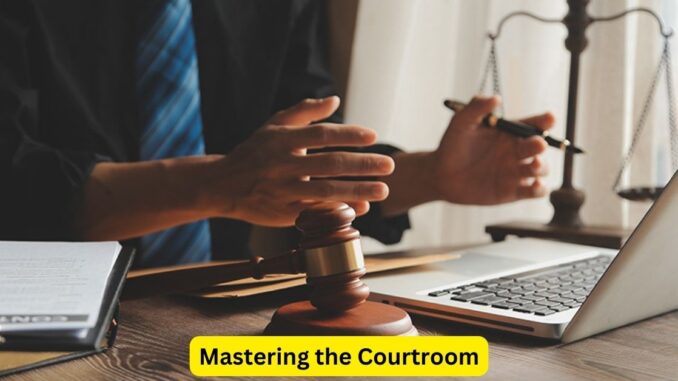
Advocacy is an art form that combines legal knowledge, persuasive skills, and a deep understanding of human nature. Mastering the courtroom requires not only technical proficiency but also the ability to connect with judges and juries on a personal level. “The Art of Advocacy: Mastering the Courtroom” explores the essential elements that contribute to effective courtroom advocacy, drawing insights from seasoned legal professionals.
The Foundation: Legal Expertise
At the heart of effective advocacy is a solid foundation of legal knowledge. Lawyers must be thoroughly familiar with the relevant laws, precedents, and procedural rules that govern their cases. This expertise allows them to construct well-founded arguments and anticipate counterarguments. Veteran trial attorney Robert Harris emphasizes that a deep understanding of the law is crucial for credibility in the courtroom. “Knowing the law inside out gives you the confidence to navigate any legal challenge that arises during trial,” he notes.
The Power of Persuasion: Crafting Compelling Narratives
Persuasion is a key component of advocacy. Lawyers must be able to craft compelling narratives that resonate with judges and juries. This involves more than just presenting facts; it requires storytelling that evokes emotion and underscores the human element of the case. Jennifer Lee, a successful defense attorney, explains, “A good story captures the jury’s attention and helps them see the case from your client’s perspective. It’s about making the abstract concrete and relatable.”
The Art of Cross-Examination: Uncovering Truths
Cross-examination is often considered the pinnacle of courtroom advocacy. It is an opportunity for lawyers to challenge the credibility of witnesses and expose inconsistencies in their testimony. Mastery of cross-examination requires careful preparation, keen observation, and strategic questioning. Angela Brooks, known for her skillful cross-examinations, advises, “Always listen carefully to the witness’s answers. Sometimes the smallest detail can open the door to a significant revelation.”
The Role of Presentation: Visual and Verbal Communication
Effective advocacy also involves strong presentation skills. Lawyers must be adept at both verbal and non-verbal communication. This includes clear and concise speaking, confident body language, and the use of visual aids to reinforce key points. Michael Chen, a prosecutor, emphasizes the importance of visuals in complex cases. “Visual aids can help simplify complicated information, making it easier for the jury to understand and remember,” he says.
The Human Element: Building Rapport
Building rapport with the judge and jury is essential for effective advocacy. This involves demonstrating respect, empathy, and integrity. Lawyers who connect on a human level are more likely to gain the trust and sympathy of their audience. Lisa Nguyen, a family law attorney, stresses the importance of authenticity. “Be genuine and show that you care about the people involved. Jurors can sense insincerity, and it can undermine your case.”
The Ethical Imperative: Upholding Integrity
Finally, effective advocacy is rooted in ethical practice. Lawyers must uphold the highest standards of integrity, ensuring that their conduct in the courtroom reflects the principles of justice and fairness. This not only builds trust but also upholds the integrity of the legal profession. Sam Patel, an environmental lawyer, believes that ethical advocacy is essential for long-term success. “Your reputation is your most valuable asset. Always advocate with honesty and integrity.”
Conclusion
“The Art of Advocacy: Mastering the Courtroom” underscores the multifaceted nature of effective legal advocacy. From deep legal knowledge and persuasive storytelling to skilled cross-examination and ethical practice, mastering the courtroom is a complex and dynamic endeavor. Lawyers who excel in these areas not only achieve success in their cases but also contribute to the broader pursuit of justice. Through their dedication and skill, they transform the courtroom into a stage where truth and fairness prevail.

Leave a Reply